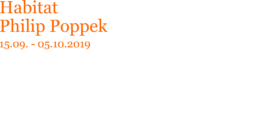
Komplize List | great meeting YOU | |
Äußere Vorzeichen, innere Ahnungen | BLACKBOX | ECHO (Screening) |
Habitat | CK-OFFSPACE: OPEN CALL | A RETROSPECTIVE |
Create a balance without a key (workshop) | IMAGINARY DISPLAY(s) (Talk/Screening) | like a permanent tourist |

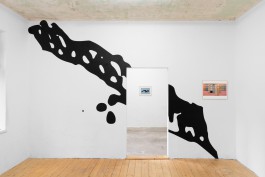
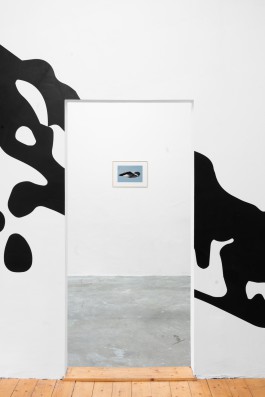
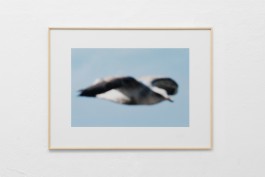
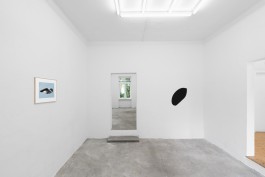
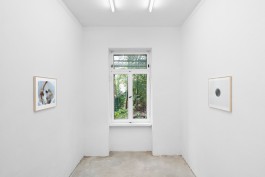

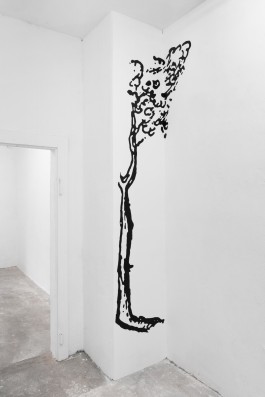
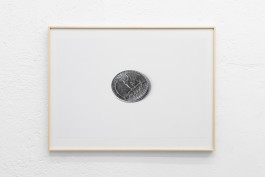

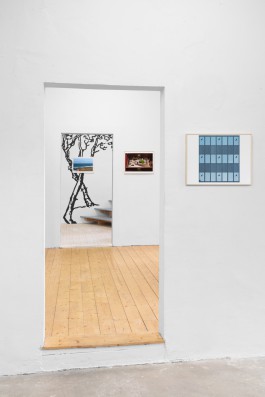
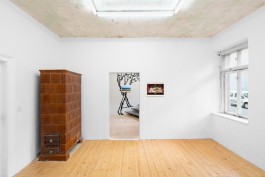
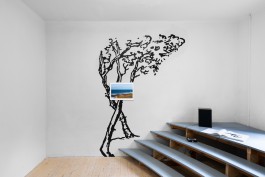
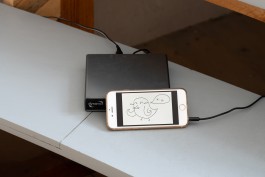
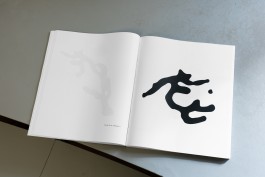
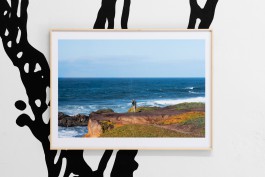
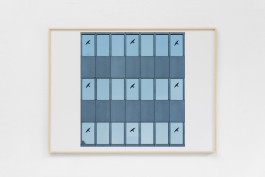
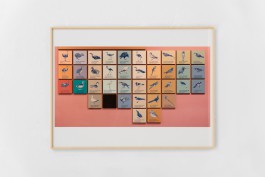
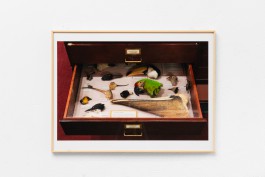
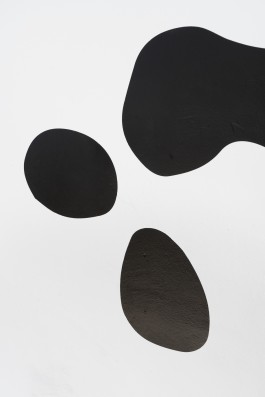
Person einen Vogel in einem Baum betrachtend
Person einen Vogel in einem Baum betrachtend, zieht das Fernrohr aus der Innentasche ihres Jackets, nimmt ihr Notizbuch zur Hand, fokussiert und notiert.
Das Federkleid: Deckfedern des Rumpfes in rot; Schwungfedern in dunklem Braun; die Steuerfedern am oberen Schwanzbereich Grün im unteren Bereich mit einem Verlauf ins Blau. Die Deckfedern am Kopf in Fuchsia, mit einem orangeroten Punkt am Hals und einem langen Streifen leuchtenden Lilas von den Borstenfedern den Rücken hinunter. Brust und Bauch Gelb.
Gewicht und Größe schätzt die Person. Sie kann ihn weder schiessen, um sich des toten Körpers habhaft zu machen, um ihn dann zu vermessen, zu wiegen, auszunehmen, den Mageninhalt zu untersuchen, das Federkleid zu zerteilen, die einzelnen Teile benennen, den Kopf abzutrennen, alles Fett und alle Muskeln zu entfernen, ihn trocknen zu lassen und auf ein Drahtgestell aufzuziehen, das Stück mit den Kollegen der Gesellschaft besprechend, anschliessend in einer Schublade verschwinden zu lassen noch fangen, beringen und mit einem Sender versehen, und so am Monitor betrachtend, die Bewegungen seiner migratorischen Zirkel verfolgen, von Pol zu Pol, Hafen zu Hafen, Shanghai, Rostock, Amsterdam und zurück bis ins Eis.
Der Baum in dem der Vogel sitzt ist einfarbig. Stamm, Ast, Blatt: Fast wie eine Tuschezeichnung. Von dem Ast, auf dem der Vogel sitzt, sprießen kleinere, sich selbst wieder weiterverzweigende Äste ab. Der Baum trägt viele Äste und noch mehr Blätter. Mit dem Fernrohr tastet die Person nun den Baum von Wurzeln über Stamm bis Krone ab. Die Person zeichnet die Konturen in ihr Notizbuch. Möglichst exakt, nicht mit der Hand. Unterteilend, benennend, nummerierend.
Doch der Vogel im Baum schaut zurück.
Die kleinen schwarzen Punkte, die seine Augen bilden, sind nun direkt auf die Person gerichtet. Sein Schnabel verkrümmt sich. Ist das ein Schmunzeln, gar Lächeln? Und plötzlich erschallt sein Ruf in ihren Ohren; nichts gemeinsam mit dem Gesang der Amsel, Drossel, Fink oder Nachtigall. Ein klares „Ha-Ha-Ha“ geht durch das Gezweig und die Person stellt fest dass nicht Sie, sondern der Vogel soeben in Lachen ausgebrochen ist.
//en:
Person observing a bird in a tree
Person observing a bird in a tree extracts the telescope from the inner pocket of their jacket, picks up their notebook, focuses and notes something down.
The plumage: feather coverage on the body in red; wing feathering in dark blue; flight feathers in tail’s upper area green in lower part gradually turning blue. Feather coverage on the head in fuchsia, with one red-orange spot on the throat and one long, bright lilac stripe from the facial bristles down to the back. Chest and belly yellow.
Weight and size the person guesses. They can neither shoot it, help themselves to its dead body, in order then to measure, weigh, document it, to examine its stomach contents, to dissect its plumage and label the individual parts, to sever its head, remove all fat and muscle, to let it dry and hang it on a wire frame, discussing the piece with colleagues at the society, afterwards leaving it in a drawer; nor could they catch, ring and fit it with a transmitter, and thus by observing on a monitor, track the motions of its migratory circuit from pole to pole, port to port, Shanghai, Rostock, Amsterdam and all the way back to the ice.
The tree in which the bird is sitting is one colour. Trunk, branch, leaf: almost like an ink drawing. From the branch on which the bird is sitting sprout off smaller branches, which themselves branch off into twigs. The tree holds many branches and even more leaves. With the telescope, the person now scans the tree from its roots over the trunk up to its canopy. The person sketches the contours in their notebook. As precise as possible, not by hand. Sectioning, labelling, numbering.
The bird in the tree looks back.
The little black dots that form its eyes are now pointed directly at the person. Its beak contorts itself. Is that a little smile, or even a laugh? And suddenly its cry rings out in their ears; nothing in common with four-andtwenty blackbirds, Little Robin Redbreast or one little blue bird. A clear ‘Ha-ha-ha’ goes through the foliage and the person realises it’s not them, but rather the bird who has burst into laughter.
text: Philip Poppek
translation: Miriam Stoney
Photo: Philip Poppek





















Person einen Vogel in einem Baum betrachtend
Person einen Vogel in einem Baum betrachtend, zieht das Fernrohr aus der Innentasche ihres Jackets, nimmt ihr Notizbuch zur Hand, fokussiert und notiert.
Das Federkleid: Deckfedern des Rumpfes in rot; Schwungfedern in dunklem Braun; die Steuerfedern am oberen Schwanzbereich Grün im unteren Bereich mit einem Verlauf ins Blau. Die Deckfedern am Kopf in Fuchsia, mit einem orangeroten Punkt am Hals und einem langen Streifen leuchtenden Lilas von den Borstenfedern den Rücken hinunter. Brust und Bauch Gelb.
Gewicht und Größe schätzt die Person. Sie kann ihn weder schiessen, um sich des toten Körpers habhaft zu machen, um ihn dann zu vermessen, zu wiegen, auszunehmen, den Mageninhalt zu untersuchen, das Federkleid zu zerteilen, die einzelnen Teile benennen, den Kopf abzutrennen, alles Fett und alle Muskeln zu entfernen, ihn trocknen zu lassen und auf ein Drahtgestell aufzuziehen, das Stück mit den Kollegen der Gesellschaft besprechend, anschliessend in einer Schublade verschwinden zu lassen noch fangen, beringen und mit einem Sender versehen, und so am Monitor betrachtend, die Bewegungen seiner migratorischen Zirkel verfolgen, von Pol zu Pol, Hafen zu Hafen, Shanghai, Rostock, Amsterdam und zurück bis ins Eis.
Der Baum in dem der Vogel sitzt ist einfarbig. Stamm, Ast, Blatt: Fast wie eine Tuschezeichnung. Von dem Ast, auf dem der Vogel sitzt, sprießen kleinere, sich selbst wieder weiterverzweigende Äste ab. Der Baum trägt viele Äste und noch mehr Blätter. Mit dem Fernrohr tastet die Person nun den Baum von Wurzeln über Stamm bis Krone ab. Die Person zeichnet die Konturen in ihr Notizbuch. Möglichst exakt, nicht mit der Hand. Unterteilend, benennend, nummerierend.
Doch der Vogel im Baum schaut zurück.
Die kleinen schwarzen Punkte, die seine Augen bilden, sind nun direkt auf die Person gerichtet. Sein Schnabel verkrümmt sich. Ist das ein Schmunzeln, gar Lächeln? Und plötzlich erschallt sein Ruf in ihren Ohren; nichts gemeinsam mit dem Gesang der Amsel, Drossel, Fink oder Nachtigall. Ein klares „Ha-Ha-Ha“ geht durch das Gezweig und die Person stellt fest dass nicht Sie, sondern der Vogel soeben in Lachen ausgebrochen ist.
//en:
Person observing a bird in a tree
Person observing a bird in a tree extracts the telescope from the inner pocket of their jacket, picks up their notebook, focuses and notes something down.
The plumage: feather coverage on the body in red; wing feathering in dark blue; flight feathers in tail’s upper area green in lower part gradually turning blue. Feather coverage on the head in fuchsia, with one red-orange spot on the throat and one long, bright lilac stripe from the facial bristles down to the back. Chest and belly yellow.
Weight and size the person guesses. They can neither shoot it, help themselves to its dead body, in order then to measure, weigh, document it, to examine its stomach contents, to dissect its plumage and label the individual parts, to sever its head, remove all fat and muscle, to let it dry and hang it on a wire frame, discussing the piece with colleagues at the society, afterwards leaving it in a drawer; nor could they catch, ring and fit it with a transmitter, and thus by observing on a monitor, track the motions of its migratory circuit from pole to pole, port to port, Shanghai, Rostock, Amsterdam and all the way back to the ice.
The tree in which the bird is sitting is one colour. Trunk, branch, leaf: almost like an ink drawing. From the branch on which the bird is sitting sprout off smaller branches, which themselves branch off into twigs. The tree holds many branches and even more leaves. With the telescope, the person now scans the tree from its roots over the trunk up to its canopy. The person sketches the contours in their notebook. As precise as possible, not by hand. Sectioning, labelling, numbering.
The bird in the tree looks back.
The little black dots that form its eyes are now pointed directly at the person. Its beak contorts itself. Is that a little smile, or even a laugh? And suddenly its cry rings out in their ears; nothing in common with four-andtwenty blackbirds, Little Robin Redbreast or one little blue bird. A clear ‘Ha-ha-ha’ goes through the foliage and the person realises it’s not them, but rather the bird who has burst into laughter.
text: Philip Poppek
translation: Miriam Stoney
Photo: Philip Poppek